Nijo Castle is a National Treasure and a UNESCO World Heritage listed fortress in the center of Kyoto City. One of the famed 17 historic sites of Kyoto, Nijo Castle was built on the orders of Tokugawa Ieyasu in 1601 and completed in time for Ieyasu’s investment ceremony as Seiitai-shogun in 1603. Nijo Castle served as the Shogun’s official lodgings in the capital, and the venue for political rituals staged in Kyoto.
Originally Kyoto had no castle. There had been many wars and battles fought in and around Kyoto, but not around the Imperial Palace area because of the Emperor’s importance and authority. The Emperor and the Shogun had originally been based in Kyoto and both lived within their own fortified palaces, but these were not considered proper castles as such.
In the 14th century the Shogunate had weakened through internal corruption leading to the collapse of the Shogunate, and without a central government or leadership figure, the nation splintered, causing the Sengoku, or Warring States period.
Nijo Castle, or “Second Block Castle” was named after the Ni-jo, or Second Block neighbourhood of Kyoto, and wasoriginally built by the first of the Three Unifiers, warlord Oda Nobunaga in 1569 as a fortified mansion. Nobunaga was killed in a coup in 1582 and was replaced by one of his own generals, the Second Unifier, Toyotomi Hideyoshi. Following Hideyoshi’s death in 1598, the nation had split into two factions, East and West Japan, culminating in the decisive Battle of Sekigahara in 1600. The victor was the Third Unifier, Tokugawa Ieyasu.
In 1603, Nijo Castle was rebuilt by Tokugawa Ieyasu as his headquarters in the Capital. Nijo Castle was built for threereasons; as a secure base for the lodging of the Shogun when visiting Kyoto, to establish a governmental presence in Kyoto, and as a place of diplomacy with the Imperial Household. It was built primarily as a residence and administrative center rather than a place of defence. It was basically a show of authority. That authority — the title of Shogun— was bestowed upon him in Nijo Castle. Shogun Tokugawa Ieyasu then based his government, the Shogunate, in Edo, modern day Tokyo.
This hirajiro, or flatland castle is of relatively simple design, featuring two main fortified concentric compounds. The outer area is just 500 by 400 meters in size, covering 27.5 hectares and containing the ruins of the Honmaru palace, various structures, and a number of traditional gardens. Originally, the castle was a little larger, with the precincts extending as far as the Horikawa river, another 40 meters east. The current Nijo Castle features the Ni-no-Maru surrounding the Honmaru but at the time of its initial construction, it occupied only what is now the the Ni-no-Maru area. Nijo Castle was largely redeveloped prior to Emperor Go-Mizunoo’s visit in 1626 for his wedding to Princess Masako, daughter of the second Shogun, Hidetada.
For its initial construction, Tokugawa Ieyasu ordered a number of former rival daimyo of western Japan, those once loyal to the Toyotomi clan, to contribute to the construction of Nijo Castle. The use of former enemy daimyo meant Ieyasu could keep them close, keep them busy and keep them impoverished as they were not compensated for their efforts. All works were paid for from their own pockets. They were too busy and too poor to afford to wage wars and so peace was preserved. Although the castle was in operation within two years, minor carpentry and decorative painting works and later redevelopment continued until 1626 during the rule of the Third Shogun, Iemitsu.
The first thing to note is the moats. Most samurai castles at the time had 30 to 80 meter wide moats, this being the distances at which arrow and matchlock gun fire effectiveness was reduced. Nijo Castles moats are a narrow ten meterswide along the east and north faces, 20 meters wide south and west. The second point of interest is the relatively low height of the stone walls compared with other castles. Nijo Castle’s tenshu-dai, the stone base for the former tower keep stands 15 meters high, while the other stone walls average only six to ten meters. By comparison, Osaka Castles stone walls are a record 20 meters high. The stone walls feature very carefully cut, closely fitted stones. From looking at this stonework, we can deduct that time and money was spent making this castle visually appealing, and it was obviously built during peace time when the threat of attack was nil. The narrow moats and low walls can be seen as a show of Tokugawa confidence in their control over the nation. No one would dare attack, and so the moats are perfunctory at best. The narrow moats also allowed for more land space to be used internally while remaining within the constricted confines of Kyoto city.
The stone walls were topped with fortified turrets and walls. Originally eight turrets and connecting fortified corridors protected the outer rim of the castle, however only two turrets remain to this day. Six of the castles’ remaining structures have been designated National Treasure status, another 22 buildings including the main gate and yagura turrets are Important Cultural Properties. Nijo Castle was registered as a Historic Monument of Ancient Kyoto, and a World Cultural Heritage site in 1994.
Working Our Way Through
The next point of note is the Higashi Ote-mon, or Great Eastern Gate. This structure is about 24m wide, with a guard turret built across the top. The steel plated gate in the middle is nine meters wide. Just inside the gate is a security guardhouse, where visitors would be carefully screened on entry. This is one of the very few remaining such guardhouses still found within a castle grounds.
Karamon
The iconic gorgeous Kara-mon is the inner gateway to the palace and was originally built for the previous ruler Toyotomi Hideyoshi’s luxurious Fushimi Castle to the south of Kyoto.
The undulating roofing style is known as a kara-hafu, with the roof itself being made of compressed cypress shingles. Of note are the elegant carvings of auspicious birds, flowers, plants and creatures under the eves, and the use of gold leaf.
Ni-no-Maru Goten Palace
Nijo Castle’s Ni-no-Maru Goten Palace is designated a National Treasure and a World Heritage site. It is the main attraction and only remaining structure from the early 1600’s. The entire structure was based on that of Nagoya Castle’s Honmaru Goten Palace. Ieyasu had been so impressed with the workmanship and art within Nagoya’s magnificent palace, he ordered something similar be built at Nijo. The complex consists of 5 main structures covering 3,300 square meters linked together and the layout is said to resemble a flock of geese in flight. The Tozamurai, Shikidai, O-hiroma, Sotetsu-no-ma, and Hakushoin-no–kaku buildings feature 33 rooms in total, and of those, the most splendid is the formal audience chambers, the O-hiroma, where the Shogun and his daimyo vassals would meet face to face.
First one enters the kurumayose, grand entrance. Decorated with gold fittings over black lacquered support beams, a roof of kokera, being small, thin cypress wood planks held in place with bamboo nails. Daimyo could ride in their palanquin into this section and alight at the stairs. The kurumayose leads directly into the largest of the buildings, the Tozamurai.
The Tozamurai consists of 8 chambers, many of which were used as waiting rooms for the daimyo feudal lords prior to their audiences with the Shogun. Built almost entirely of quality Hinoki cypress timbers and decorated with lavish quantities of gold leaf and elaborate wood carvings, the entire complex was intended to impress visitors with the power and wealth of the Tokugawa.
The famed Kano School of artists were contracted to decorate the sliding doors and walls of each room. Over 1,016 gold leaf gilded walls and partitions inside the palace are decorated with gorgeous artworks painted directly onto the gold, and have been listed as Important Cultural Properties. Unfortunately, in 2015 the original art works adorning the walls were removed from the palace and replaced with copies. The original works were then placed inside specially built concrete display centers designed to look like traditional rice granaries for preservation purposes.
Like the design of the architecture, the art on the walls is based on that of Nagoya Castle’s Honmaru Goten Palace, and also features tigers and leopards. The ancient artists had never seen real tigers or leopards, just the pelts on which these works were based, and believed that the tiger was the male, the leopard the female of the species. (Tigers and leopards don’t even share the same continent let alone habitat!) The big cats were painted on walls where guests, other daimyo, were to wait for an audience with the Shogun. The animals were supposed to show the power of the Tokugawa and intimidate those waiting.
Shrill chirping noises produced by visitors stepping on the uguisubari, “Nightingale Floor” is passed off as an intruder alert, however according to castle and architecture specialist Professor Miura Masayuki, the floors squeak because of poor workmanship. He also suggests that the floor making such a noise alerted not the guards, but the Shogun himself that someone was coming, giving him time not to defend himself, but to compose himself and not be caught at ease.
When visiting, the higher ranked you were, the closer you were initially positioned to the Shogun’s audience chambers, however on a busy day, such as New Years greetings and auspicious days, depending on the numbers, you may be told to wait in order of the rooms, the Yanagi-no-ma, the San-no-Ma, Ni-no-Ma and the larger Ichi-no-ma, also known as the “Tiger rooms”. From there visitors would be moved to the Shikidai and finally the grand O-hiroma.
It was in this historical O-hiroma hall in October of 1867, that the 15th Shogun, Tokugawa Yoshinobu gathered the senior statesmen of the various feudal clans, and formally announced his resignation, and with it, the end of the Tokugawa Shogunate and the restoration of Imperial Rule. The Tokugawa's control over Japan ended in the same castle it had begun around 260 years earlier.
Seiryuen Garden
The beautiful Seiryuen Japanese garden was designed in 1965. Originally this land contained barracks for the samurai serving Nijo Castle. It became a garden only during the Meiji period, between 1868 and 1912. Upon the death of the Emperor Meiji, the site became a palace where his son, Emperor Taisho’s coronation and other state functions were held.
The castle grounds feature several cherry and Japanese plum gardens. The Ni-no-maru garden was designed by the landscape architect and tea master Kobori Enshu, son in law of one of Nijo Castles’ architects, Todo Takatora. The garden has a large pond with three islands and features numerous carefully placed stones and pine trees.
Honmaru
The Honmaru Goten Palace covers 1,600 square meters and consists of the residential quarters, reception and entertainment rooms, entrance halls and kitchen area. Each section is interconnected with corridors and courtyards. The original Honmaru Palace was similar to the current Ni-no-maru Palace, however the original structures were destroyed by fire in 1788, and replaced between 1893 and 1894 by the present structures relocated from the former Katsura Palace sector within the Kyoto Imperial Palace. Like the Ni-no-Maru Palace, the Honmaru Palace is excellent example of classical Japanese architecture.
Tenshu, Tower Keep
Nijo Castle once featured a five-story tenshu tower keep on its south western corner, which had been relocated from Fushimi Castle, and from which the Emperor had enjoyed a view of Kyoto from the top. The Emperor enjoyed the view so much that he requested another visit some months later. This magnificent tenshu was destroyed by a lightening induced fire in 1750 and was never rebuilt. Only the stone base remains. The reasons for the keep never being rebuilt was that the Tokugawa clan had enforced a rule that prevented castle construction, and so they had to set an example for others. Also, by this time, they had established complete control over the nation, and were powerful enough not to need to show that authority. A third reason is that the Tokugawa were notoriously frugal and chose not to spend money on rebuilding.
Major Historical Landmark
Nijo Castle remained on high alert across the Edo period should the Shogun ever make an appearance in Kyoto. In 1868, following Shogun Tokugawa Yoshinobu’s resignation, the new Imperial Government moved into Nijo Castle, and instantly replaced the prominent Tokugawa crests with the Imperial Chrysanthemum crest. During recent repair works, it was discovered that some of the Tokugawa crests had simply been covered over, rather than removed. In 1893 the Imperial Palaces’ Katsura Palace structures were relocated to Nijo Castle, replacing the burned Honmaru Goten Palace. The banquet in celebration of the enthronement of Emperor Showa (Hirohito) was held in the Ni-no-maru Goten in 1928. In 1939 Nijo Castle was given to the City of Kyoto and opened to the public as a park, although the Honmaru Palace remains closed to the public except on special occasions.
Nijo Castle remains one of Kyoto’s major drawcards and is a must-see link to the grandeur of the past, and a major turning point in Japanese history.

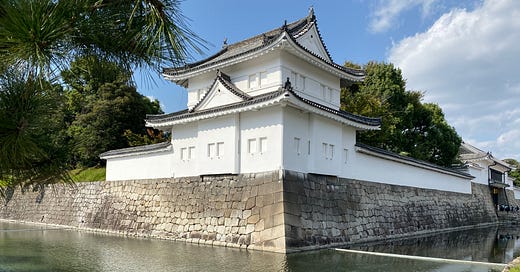




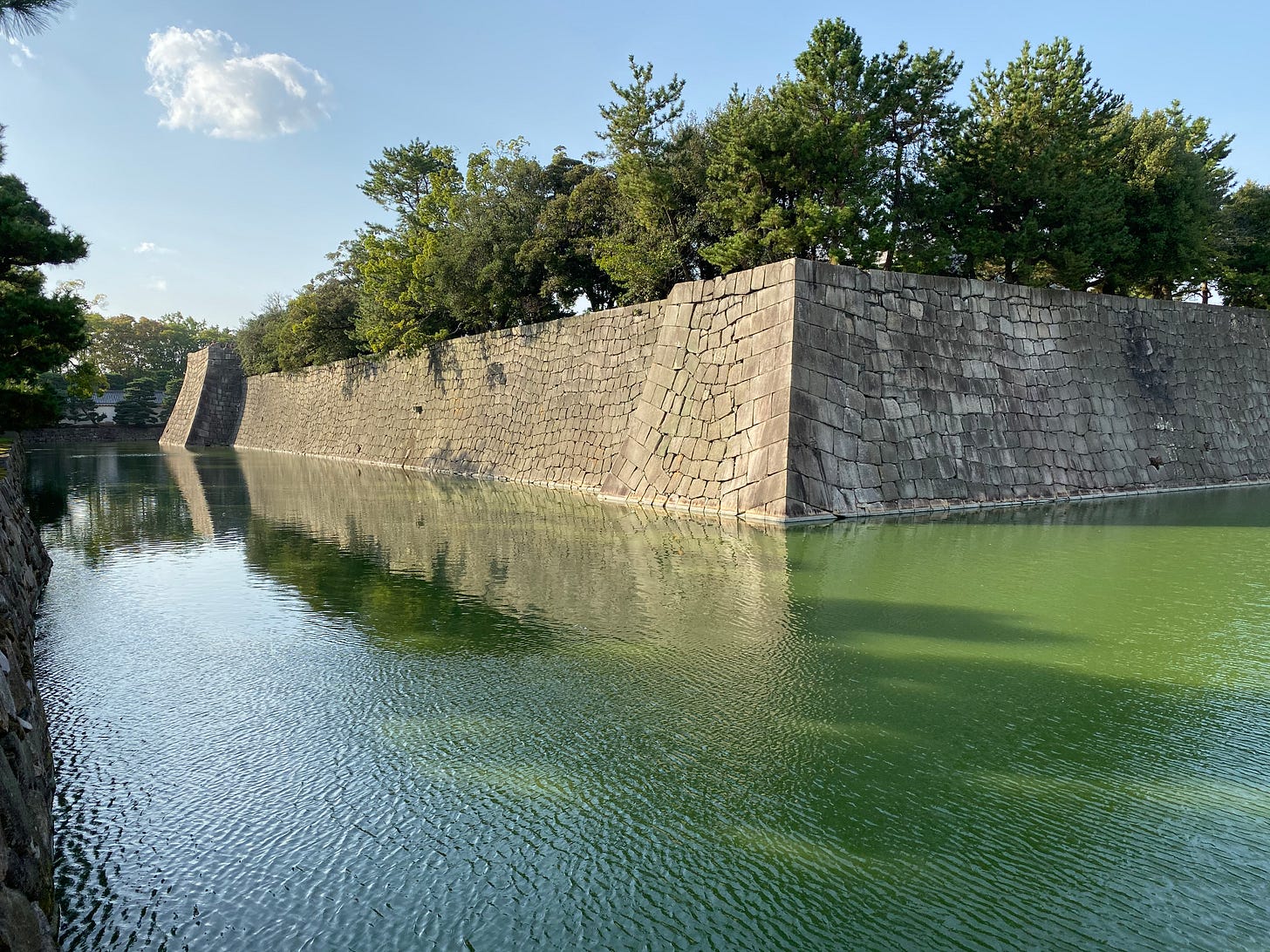
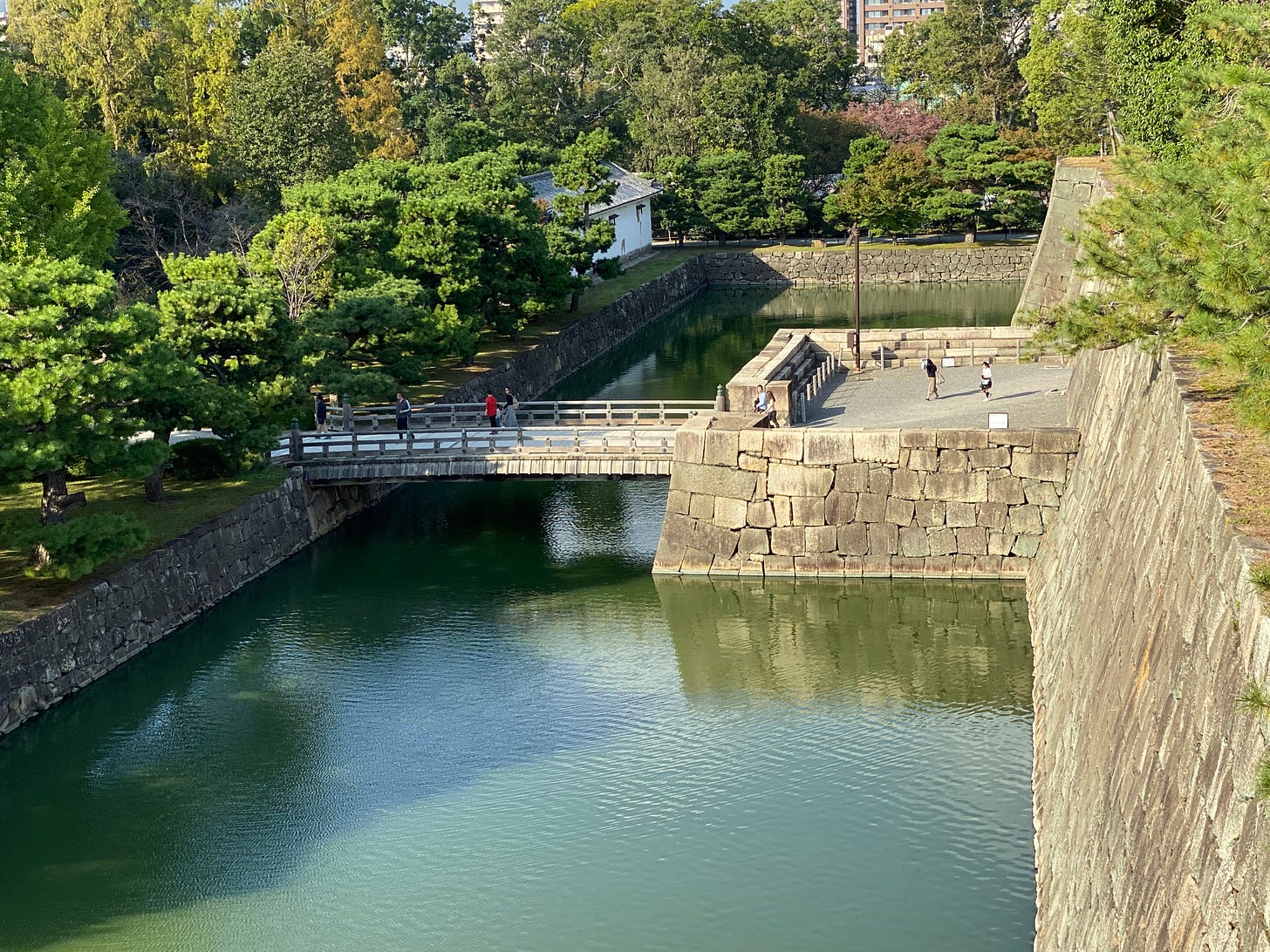
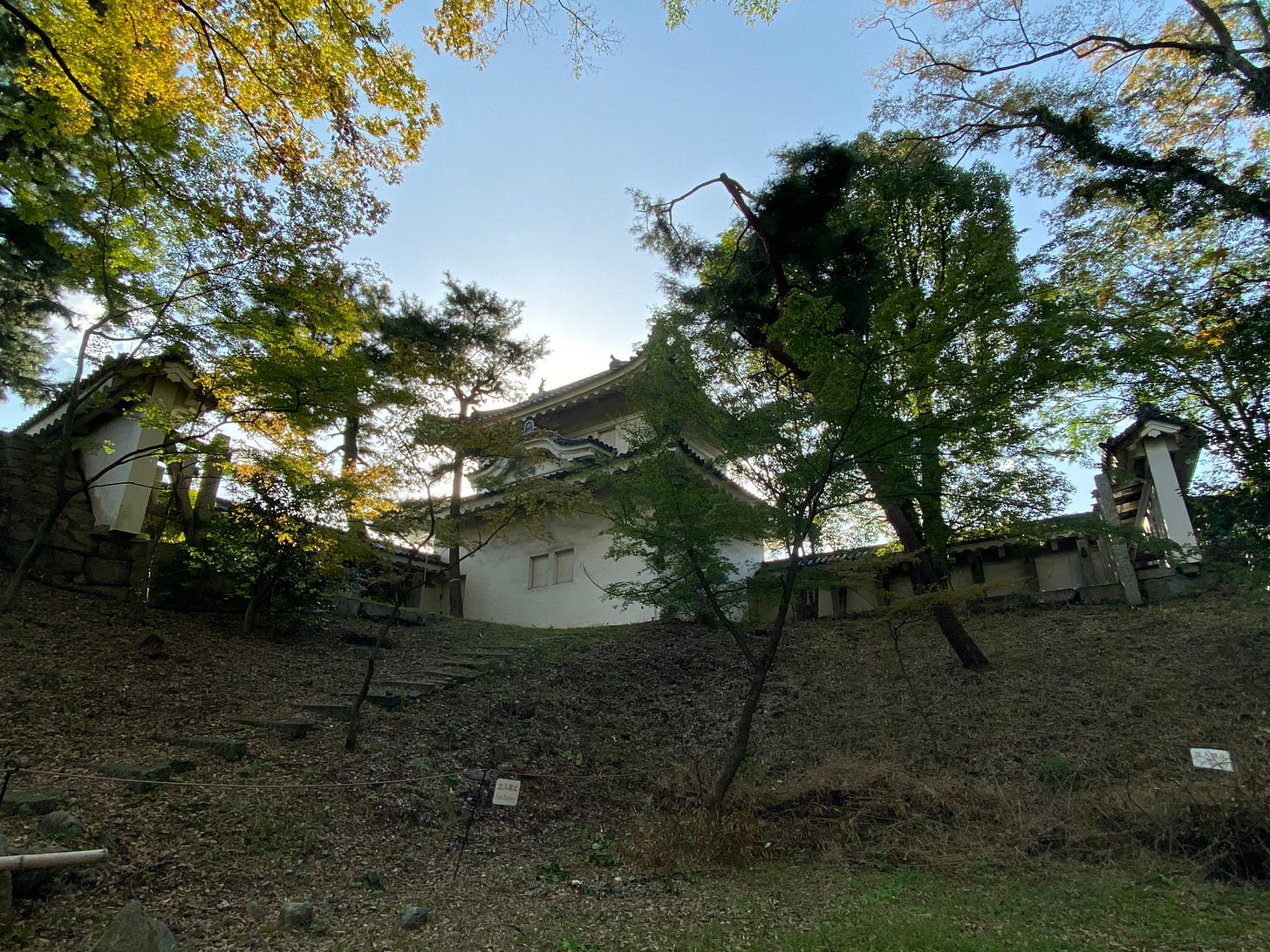

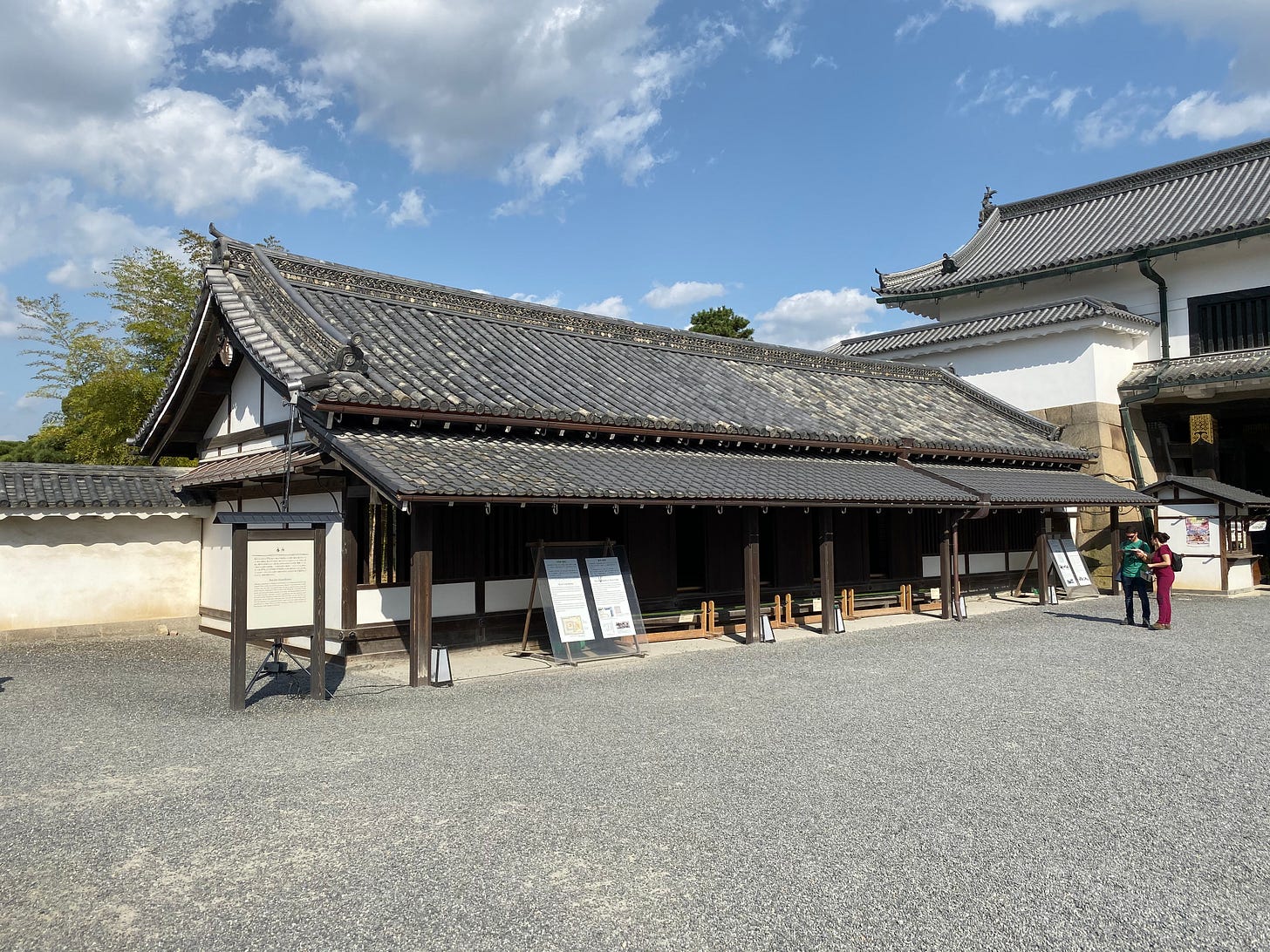
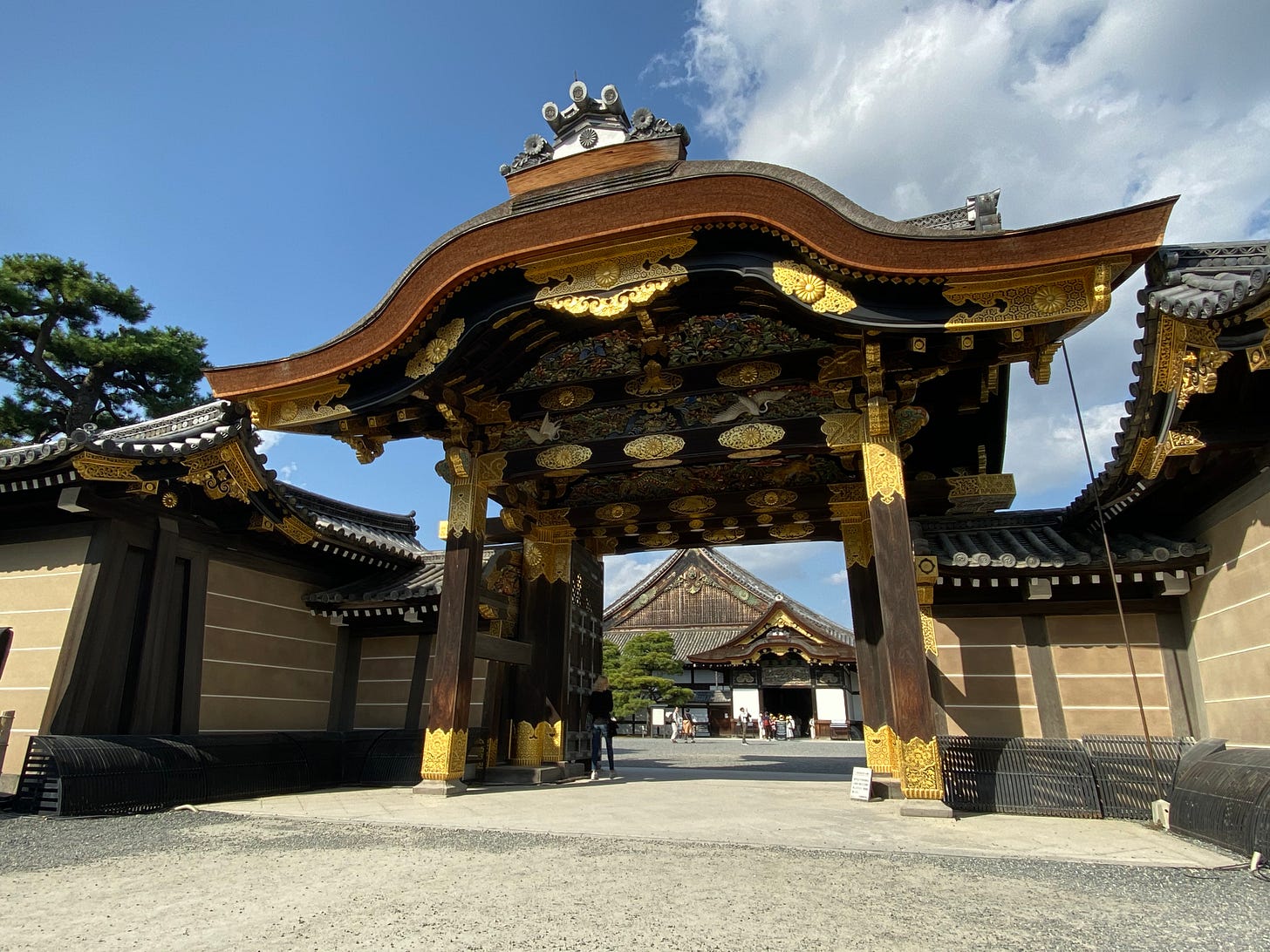
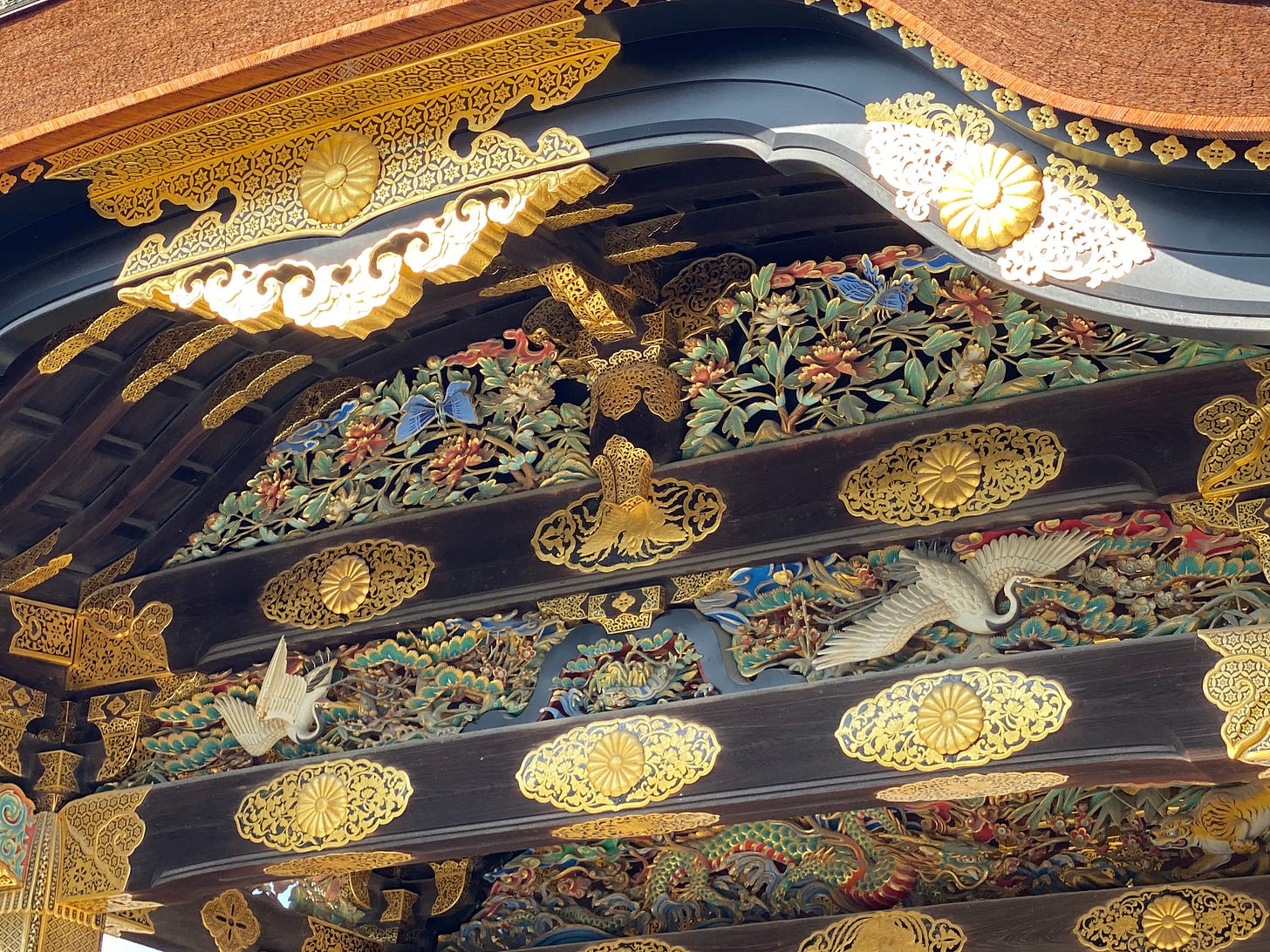

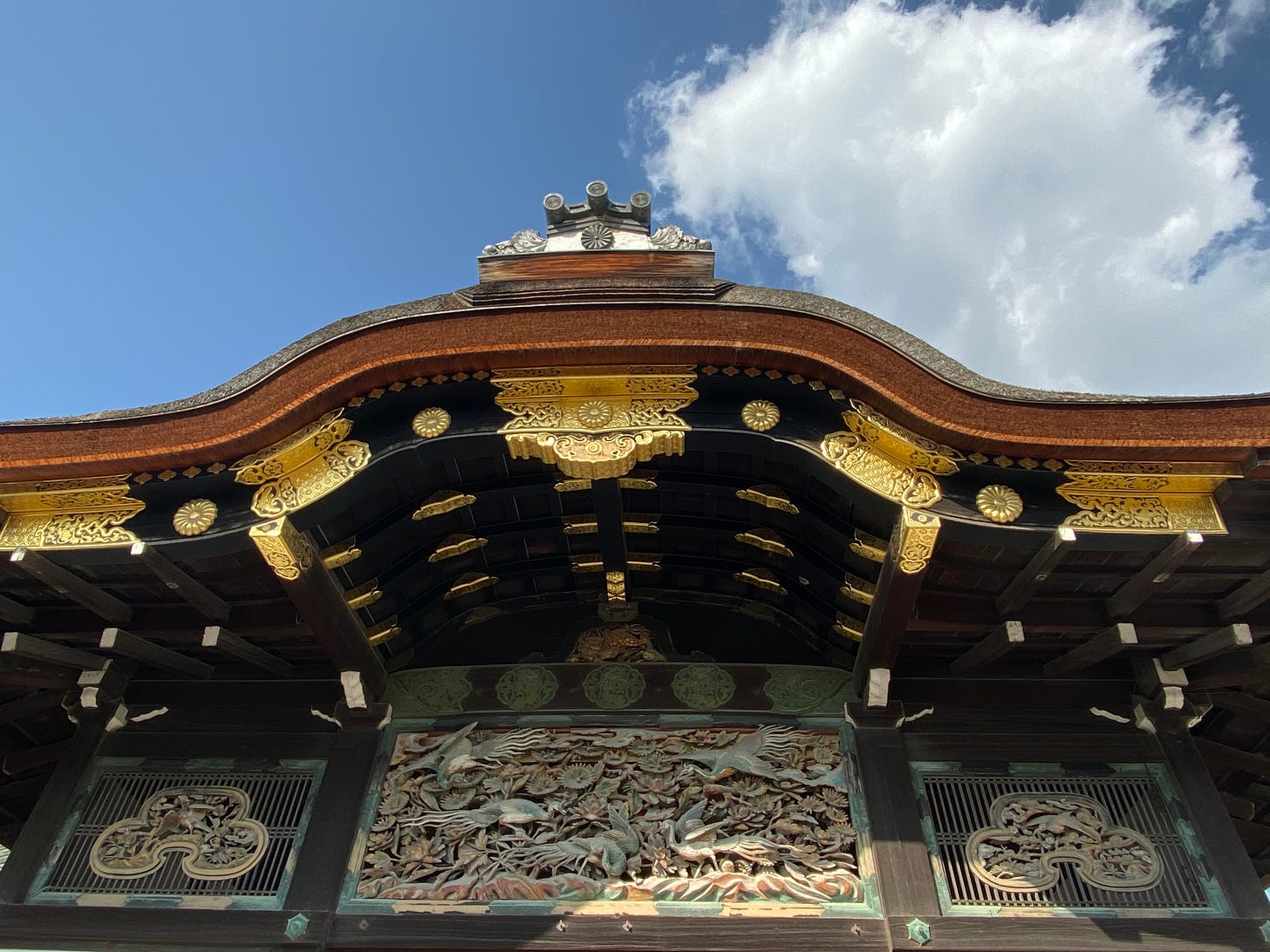
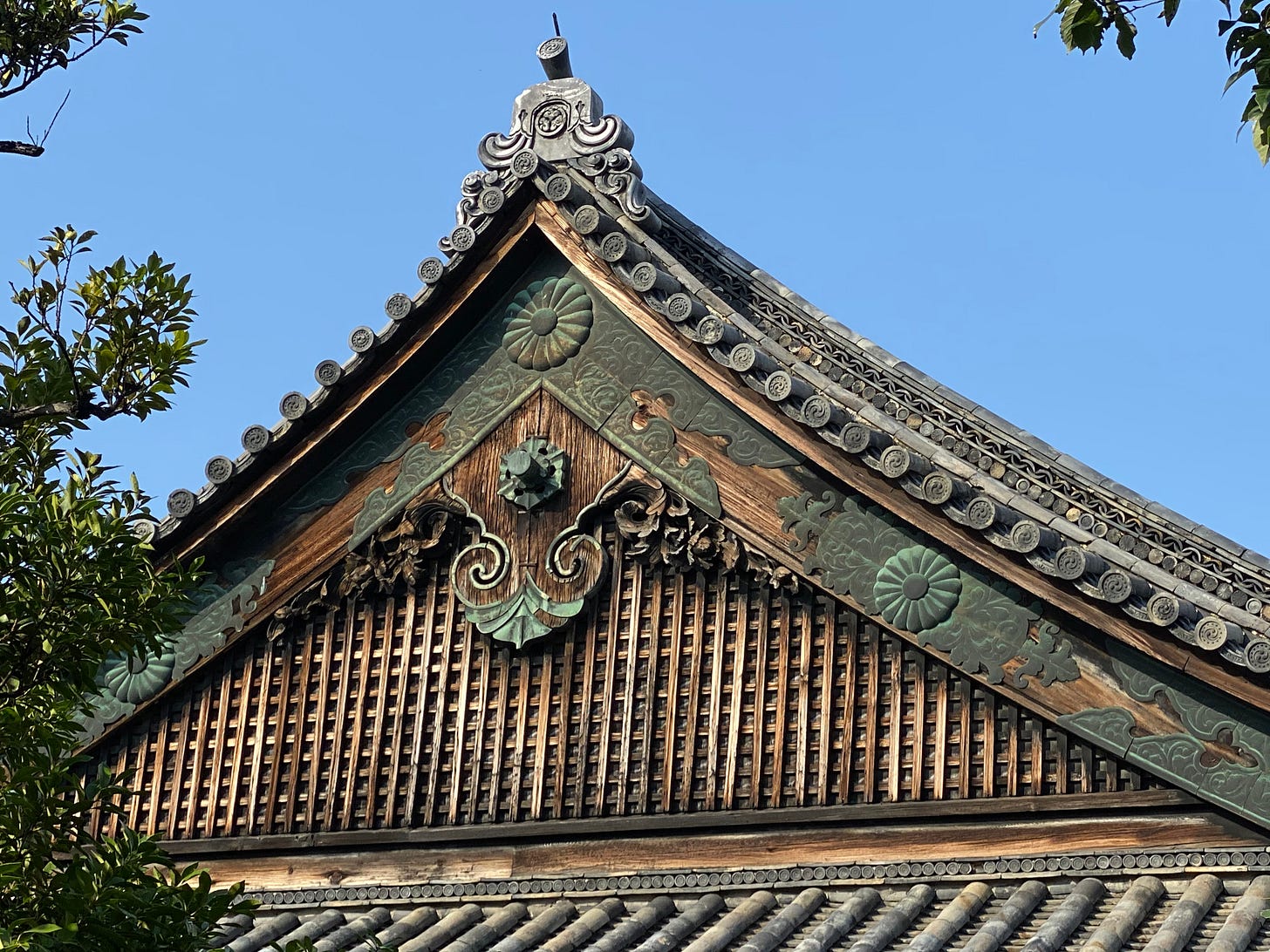
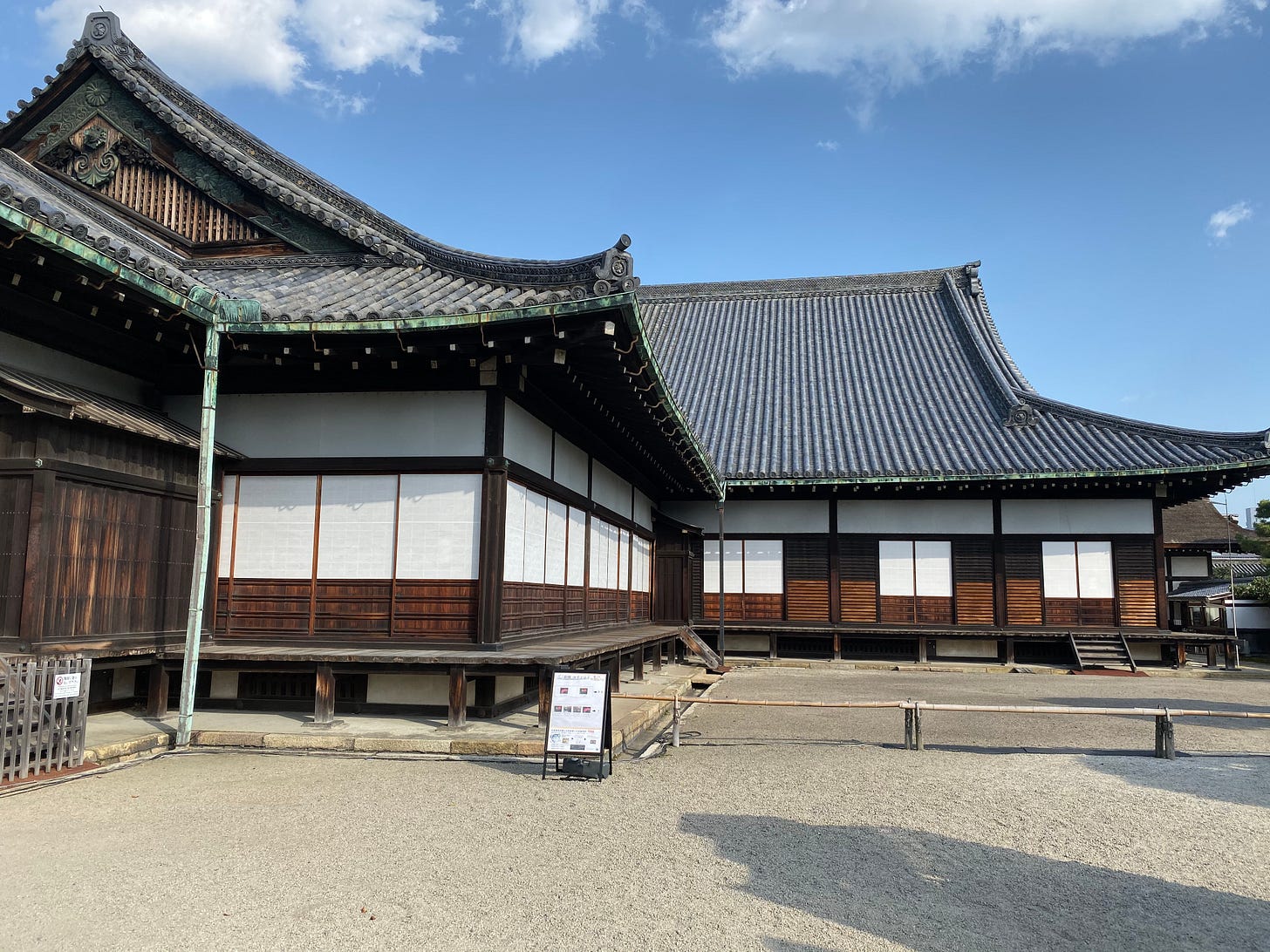

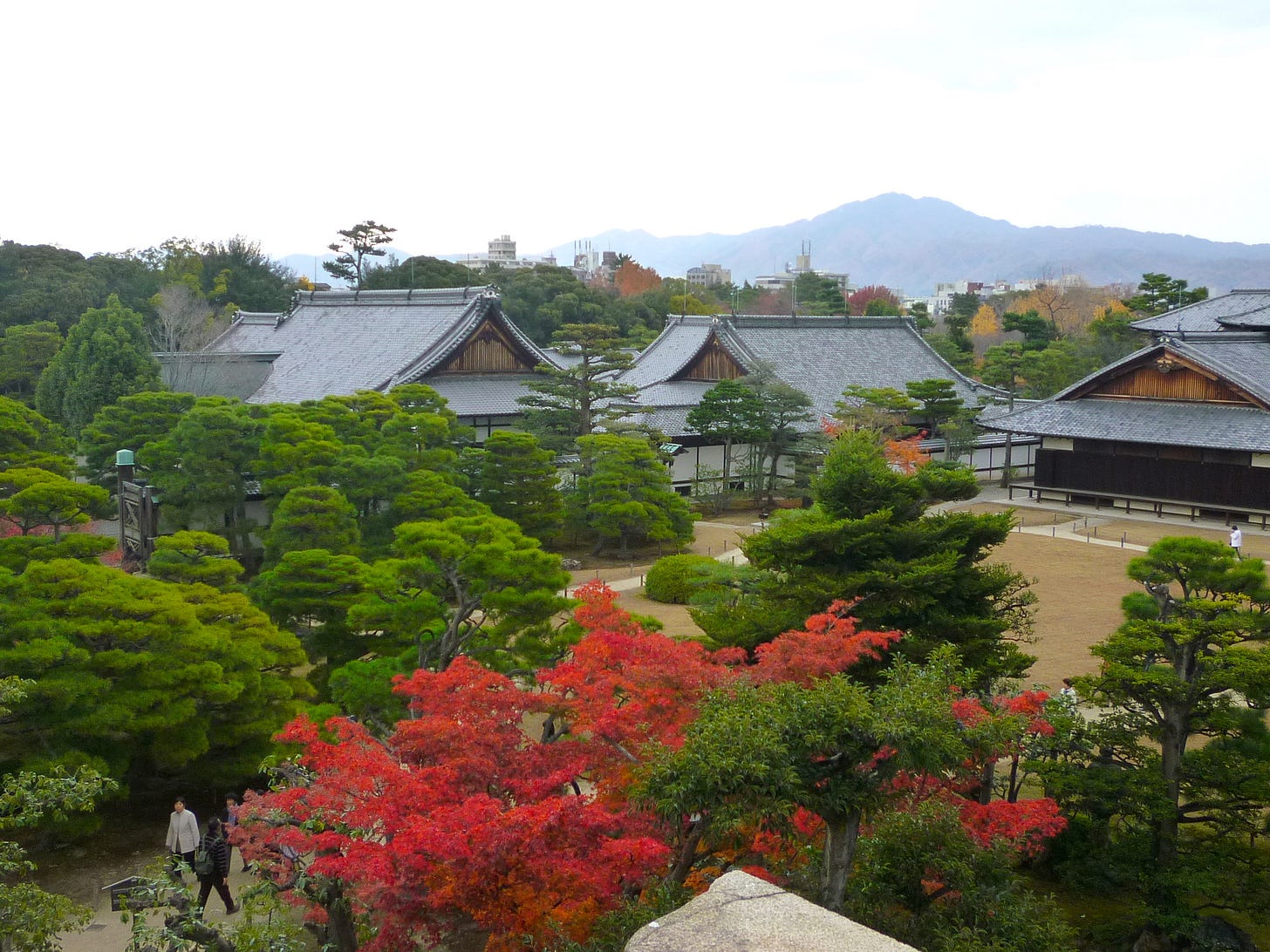

Good read and pics, TY!